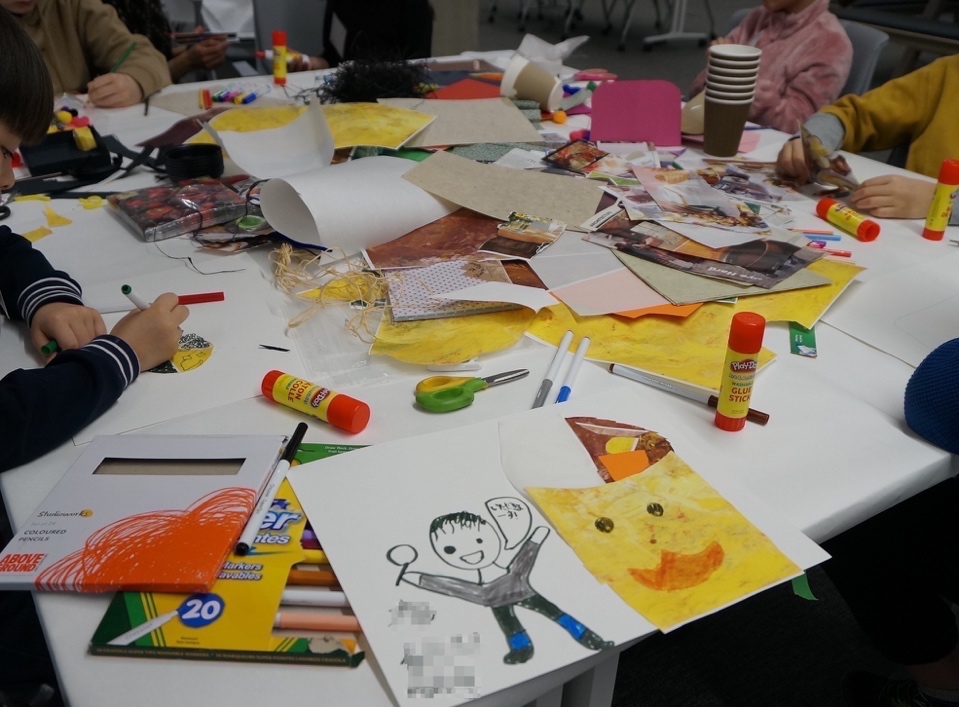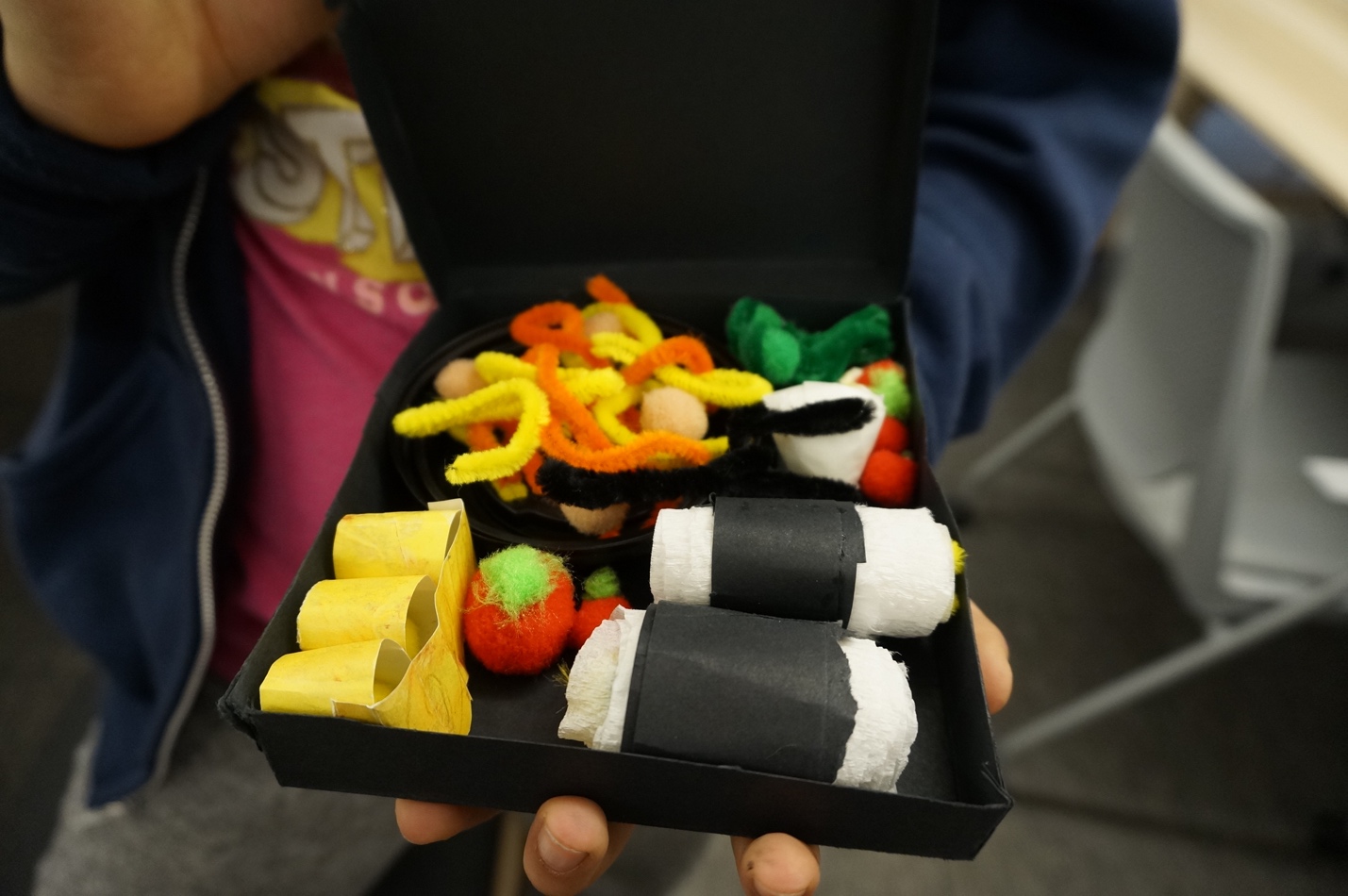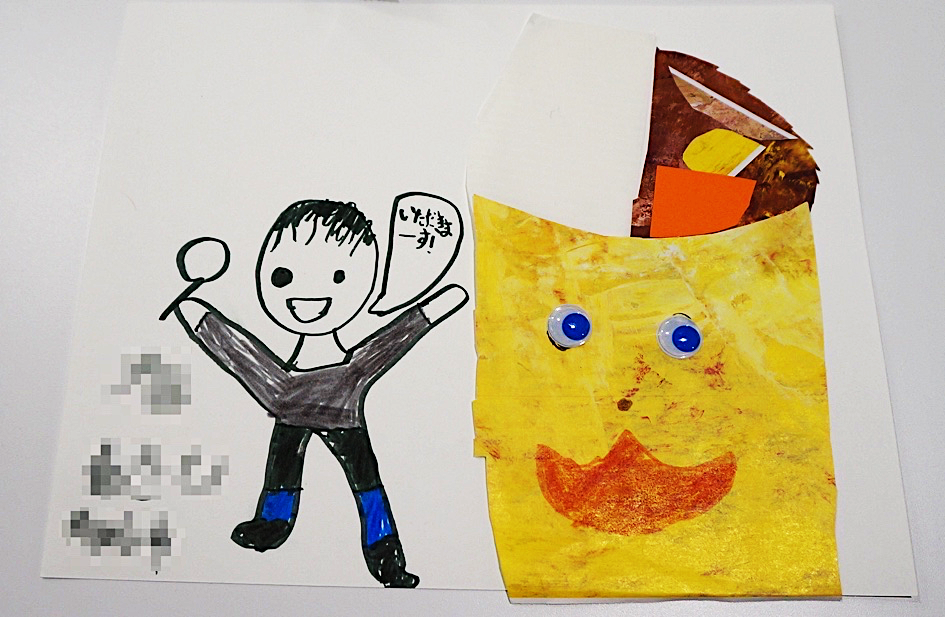1.14: Case- School Lunchtimes
- Page ID
- 20996
Yukari Seko is a critical health communication scholar and an Assistant Professor at Toronto Metropolitan University’s School of Professional Communication. Her program of research takes a participatory, arts-informed approach to explore communication processes related to mental health, disabilities, and food practices. Her current research interrogates how Asian immigrant families navigate through institutionalized food environments in Canada including school, hospital and long-term care facility.
Lina Rahouma graduated from the Nutrition and Food program at Toronto Metropolitan University. She then completed a Professional Master’s Diploma in Dietetics through Ryerson University, in partnership with The Hospital for Sick Children. She is passionate about food literacy, food security, and children’s nutrition and health, and she has a deep interest in working internationally and learning about different cultures and foods.
Learning Outcomes
After reading and discussing this text, students should be able to:
- Describe how children’s home-packed lunches reflect family food values and their social locations.
- Identify potential impacts of food culture mismatch experienced by children between home and school.
- Discuss potential ways of mitigating the negative impact of food culture mismatch.
- Name structural barriers in school food environments and propose creative solutions for fostering an inclusive and accepting climates in the classroom.
Introduction
“Mom, can I bring a sandwich to school?”
“Yes, of course. But can you tell me why? I thought you love onigiri [rice ball].”
“…My friend told me ‘you brought sushi again.’ I’m hiding it during lunch time.”
I (Yukari) vividly remember this conversation with my then five-year-old son when he started senior kindergarten in the Toronto District School Board.[1] Growing up in Japan and having migrated to Canada in my 20s, it never occurred to me that my son’s Japanese-style bento would attract unwanted attention at school. His bento box was typically packed with what we eat at home: meat or fish dishes (dinner leftovers), cooked vegetables, and steamed rice (often made into onigiri), which I grew accustomed to and thought of as ‘normal.’ Yet what I thought was an ordinary lunch stood out at my son’s school, leading him to feel embarrassed about his favorite foods.
This poignant experience told me that children’s lunches at school closely reflect the complex realities of their families’ food landscapes. Indeed, food has profound symbolic values that shape one’s cultural identity. For immigrant families, home-packed lunches (i.e., meals to be consumed outside the home) can play a crucial role in maintaining their emotional ties to the ‘home country’ and preserve their culinary identities across generations. However, as my son’s request for sandwiches indicates, norms and expectations around what to eat at school differ, not only among family members, but also between the home and the school, and across food cultures.
In this chapter we present a case about school-aged children of Japanese origin and their mothers focusing on their experiences during Canadian school lunchtimes. As a unique medium connecting the private and the public food environments, children’s lunches at school provide a salient context in which to explore how families formulate food meanings and habits in and outside the home. Our exploration unpacks the complex interplay between migration, gender, social class, school, and larger sociocultural discourses on healthy eating that determine what goes in the lunchbox.
Unboxing the bento box[2]
To help children engage in the study and openly express their thoughts on school lunchtime, we used an arts-informed research method in combination with focus group interviews. A total of 16 school-aged children (6 to 12 years old) of Japanese background participated in two art workshops, facilitated by the researchers and a fine artist, and created art pieces about their typical school lunchboxes. Coloured paper, textiles, magazine pages, coloured pencils, markers, and other arts and crafts supplies were provided to spark children’s creativity (see Figure 1). After creating their lunchboxes, the children were invited to join focus groups to talk about their experiences at school lunchtime. This data collection process transformed otherwise adult-oriented interview procedures into a more relaxed, enjoyable, and child-centred experience.
Along with the children, we also conducted a total of four focus groups with 19 Japanese immigrant parents (all mothers), asking about their experience packing children’s lunches to school. After the preliminary analysis, we shared an animated video summarizing the findings and asked all participants for anonymous feedback. This engaging member checking process was invaluable for this study, to ensure analytic rigor and integrate voices of the children and mothers into the final analysis.

Mothering away from home through bento box
All mothers who participated in the study reportedly took on responsibility for family feeding and indicated strong preferences about serving Japanese home meals to their family. For the mothers, a ‘good’ lunch means aJapanese-style lunch, namely, a nutritionally balanced, wholesome meal containing diverse food items, including a staple, main and side dishes, and a substantial amount of vegetables. This perception was informed mainly bythemothers’own experience growing up in Japan, within theJapanese national food educationprogram(shokuiku) that prioritizes Japanese home-cooked meals as optimal for children’s development.[3] Moving away from Japan, the mothers strived to prepare good bento for their children, in order to nourish their growth and food literacy. Some mothers reportedly taught themselves how to cook Japanese home meals after having children in Canada, so as to “feed [their] children properly” (Parent 05).
Echoing the mothers, most children in our study said they usually bring home-cooked Japanese foods to school. The majority of children’s artworks reflectedthat their lunchboxes typically contain a variety of food items,including a staple (mainly steamed rice), a main dish (mainly meat), and vegetables (Figure 2), or one-dish meals such as Japanese-style curry on rice (Figure 3).


In many mothers’ perspectives, the preparation of ‘good’ lunchboxes is tied closely with the moral accountability of ‘good mothering’ that influences children’s future health:
“All I do for the lunch stems from the truly nutritiously balanced lunch my mother made for me… I believe moms should put their effort into lunch making for their elementary school kids… The food practice during the elementary years affects his/her whole life, such as fussiness [in food habits].” (Parent 03)
Relatedly, the mothers’ perceived responsibility to prepare ‘good’ lunches for children goes in tandem with their commitment to help children with ‘good’eatinghabitsoutside the home. Many mothers taught their children to finish the bento—leaving no leftover—so that they can get enough nutrients and express appreciation for the food. Through everyday lunchbox making, these mothers hope to pass on to their children a Japanese culinary identity and normative understandings of personal responsibility for health. In return, most children internalized the mothers’ ideas of a ‘healthy’ lunch and the moral imperative of good eating, and followed the exhortations to eat all foods served to them.
Food culture mismatch
Although their children’s lunchbox embodies the mother’s active commitment to promote children’s health and well-being, what were considered ‘good’ lunches do not always fit within the school food environment. Some children in our study reportedly experience food culture mismatch[4] between home and school. As the opening anecdote suggests, Japanese food items such as onigiri (rice ball) and nori (seaweed) occasionally attract unwanted attention at Canadian schools. When asked what their schoolmates would say when they bring Japanese foods to school, one child described:
“They sound like they’re saying it’s gross, I don’t like it. [They’re] not my friends but the boys in the class… They say like, ‘ew, what is that?’ in like a gross way.” (Child 12)
Other participants shared that some Japanese food items are seen unfamiliar or foreign, and thus become subject to mockery and negative comments.
“My son was told by his classmate, ‘inari sushi[5] is bad for your health.’ I said to my son you should ask your classmate if they have ever had it. My son actually asked next day and found that the classmate didn’t know anything about inari sushi. They were like ‘what is it?’ For them it was an unfamiliar brown thing that looked unhealthy.” (Parent 07)
Additionally, both children and mothers noted that Canadian school food environments do not always accommodate their food practices. Due to the lack of access to microwave ovens, some of their favorite Japanese foods cannot be packed in their lunchboxes, as these foods lose flavor when they get cold. Some children bring thermal lunchboxes, but their favorite foods cannot always be packed because both the texture and flavours are altered.
Most children also reported that they often feel rushed to eat. As lunchtime is part of recess in many Canadian public schools, students’ actual seated lunchtime is limited to 15 to 20 minutes, which may not allow children to finish Japanese-style bento with a variety of food items. Responses to their children’s experiences at school varied among families. While many have maintained their preferred food practices, some mothers have reportedly modified their children’s bento to accommodate their children’s need to fit in at school.
Shaming toward ‘unhealthy’ food habits
While some Japanese foods are seen as foreign and unfamiliar at Canadian schools, food shaming does not occur in a one-way direction. Many participants, children and mothers alike, shared negative views toward other children’s ‘unhealthy’ lunchboxes, ones that were perceived to be nutritionally unbalanced or containing ‘junk’ foods. Some children commented that their classmates bring “unhealthy (foods) like burgers…like sandwiches that have a lot of junk in it” (Child 07). Such descriptions do not fall into their definition of a ‘healthy’ lunch. Other children reportedly felt puzzled by peers whose lunches do not consist diverse food items. One child commented that it was hard to understand why one of her classmates “only had Tim Hortons for lunch for the whole year” (Child 03). To her, such a food habit does not represent ‘healthy’ eating.
Though relatively scarce in our data, negative perceptions toward ‘unhealthy’ food habits were sometimes associated with lower socioeconomic status and financial constraints. One mother commented on her child’s classmate who brings prepackaged snacks for lunch:
“I asked my daughter what [the classmate] eats during lunch time. [My daughter said] she fills with snacks. I was like really? Her parents are rich and still that?” (Parent 08)
A link between low socioeconomic status and ‘snacks’ (i.e., prepackaged, processed foods) is alluded to in this comment through the surprise the mother felt that affluent parents would provide their children with ‘unhealthy’ foods. It is worth noting that children reported that their teachers would quickly intervene when culture-related food shaming took place in class, but comments on ‘junk food’ rarely attracted the adults’ attention.
Conclusion
Children’s school lunchboxes embody multiple aspects of a family’s food practice, including culinary traditions, family dynamics, social locations, and sociocultural discourses of ‘healthy’ eating. For many of Japanese mothers in our study, everyday lunchbox making is a key aspect of mothering in and outside home, through which they demonstrate an active commitment to their children’s health and future well-being. The lunchbox is also an important locus of cultural identity to materialize and instill Japanese food values within the children growing up in Canada. Children’s artworks and narratives indicated that the mothers’ norm of ‘good’ lunch and eating is being successfully passed down to them.
The mothers’ effort to preserve Japanese culinary traditions in their new country, however, sometimescaused food culture mismatch between school and home environments. Home food that does not fit the dominant food norms of schools stands out, producing feelings of embarrassment and ostracization in children. As food is closely tied to one’s identity, the bitter experience of lunchtime shaming at school could have a substantial impact of children’s and their families’ emotional well-being. In order to embrace and nurture the diverse food identities that children bring to class, schools can engage with families from diverse food cultures and explore their priorities in helping children establish positive relationships to food.
In so doing, the prevalence of disdain toward ‘junk’ foods and a class-based notion linking ‘unhealthy’ eating with socioeconomic status merit closer attention. Stigma toward ‘unhealthy eating’ could be linked to culinary ethnocentrism or classism, which prioritizes one food practice over the others. A more inclusive, intersectional, and culturally appropriate discussion on ‘healthy eating’ at schools can support children and families from diverse ethnocultural and socioeconomic backgrounds, while safely exploring and performing their food identities. Meantime, food should not become a taboo subject at school, resulting in children becoming afraid of offending one another. Instead, schools can offer an optimal space that helps children be exposed to many different food cultures and learn how to negotiate social and emotional boundaries around their food identities.
Discussion Questions
- What are some of the ways in which a person may experience food culture mismatch between home and school?
- What are the potential ways of mitigating negative impacts of food culture mismatch children may experience between home and school environments? Take the role of students, educators, parents/families, and school staff members, and discuss how to collaboratively approach this issue.
Exercises
Think back to your own school lunch and write a short reflective essay by addressing the following questions:
- What did your typical school lunch look like when you were at elementary school? (Option: draw or make an artwork of your typical school lunch.)
- What was your favorite food/dish that you ate at school? Explain what makes this food/dish special for you.
- If you brought home-packed lunches to school, what factors shaped your lunches? How much of a factor were family food tradition, cost, nutrition, and your preference?
- Reflect on any notable experiences you may have had regarding the way your school lunchroom was set up.
Additional Resources
Allison, A. 1991. “Japanese mothers and obentōs: The lunch-box as ideological state apparatus.” Anthropological Quarterly64 (4): 195–208.
Finally Getting “White People Lunch” — “Fresh Off the Boat”
Harman, V. and Cappellini, B. 2019. “Intersectionality and migrant parents’ perspectives on preparing lunchboxes for their children.” In Feeding Children Inside and Outside the Home: Critical Perspectives. New York: Routledge. 28–41.
References
Agaronov, A., T. Entwistle, and M.M. Leung. 2019. “From the lunch table, to the family table: A grounded theory approach to understanding urban adolescents’ experiences of food culture mismatch between school and home environments.” Ecology of food and nutrition58 (1): 23–44.
Mah, C. 2010. “Shokuiku: governing food and public health in contemporary Japan.” Journal of Sociology46 (4): 393–412.
Seko, Y., L. Rahouma, C.T. Reeves, and V. Wong. 2021. “Unboxing the bento box: An arts-informed inquiry into Japanese families’ experience at Canadian school lunch time.” Canadian Food Studies/La Revue canadienne des études sur l’alimentation8 (3): 21–44. https://doi.org/10.15353/cfs-rcea.v8i3.492
- The recollection of this dialogue was made in collaboration with Asahi Seko, who was eight years old at the time of writing (summer 2021). ↵
- Results from this study are also reported in a paper published in Canadian Food Studies (Seko et al. 2021). While that work is distinct from what is presented here, the two pieces draw on the same body of research and there is some overlap between the two texts. ↵
- Mah 2010, 406-7. ↵
- Agaronov et al. 2019, 24. ↵
- Inari sushi, also known as bag sushi, is a dish of sushi rice stuffed in a seasoned deep-fried tofu pocket. ↵


